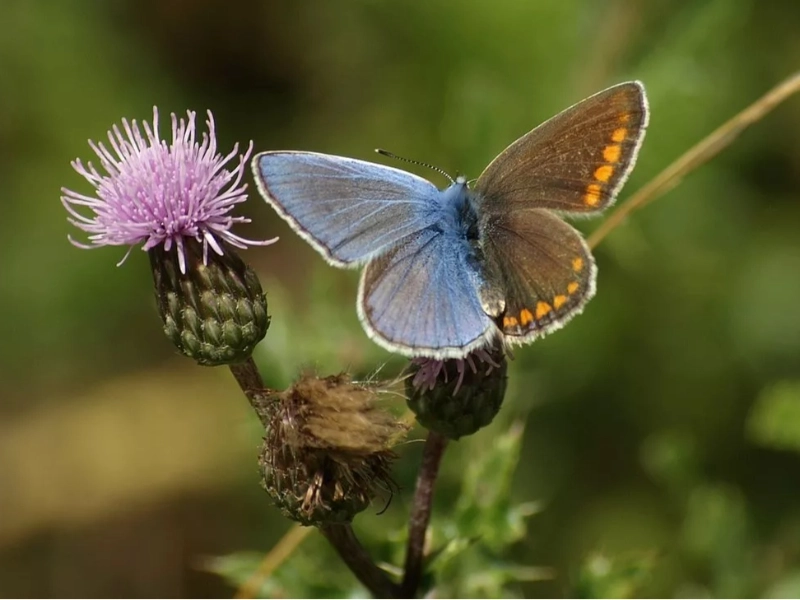Mind-Blowing Animals That Swap Sexes
6. The Extraordinary World of Gynandromorphic Butterflies

Among the wonders of nature, few events are as aesthetically arresting and biologically interesting as gynandromorphism in butterflies. Affected around one in every 10,000 butterflies, this unusual disorder causes individuals with both male and female traits concurrently. Particularly the Lycaeides butterflies have been noted to show this amazing dual-sex state, providing researchers and nature lovers with a special insight into the complexity of sexual development and differentiation in insects. Two main forms of gynandromorphism in butterflies are mosaic gyne, in which male and female traits are scattered haphazardly over the butterfly's body, or bilateral gyne, in which the butterfly is split down the middle with one side exhibiting male characteristics and the other female.
An rare event during the early phases of embryonic development causes gyneandromorphism in butterflies. Most usually, it is thought to result from a mistake in cell division soon after fertilisation. Usually in sexually reproducing species, an individual inherits one set of chromosomes from each parent, creating either male (XY in many species) or female (XX) progeny. But something goes wrong in gendered individuals during the initial cell division of the fertilised egg. This can result in a condition whereby some growing embryo cells have male chromosomes while others have female chromosomes. These genetically different cell populations give rise to tissues and structures with either male or female traits as the embryo grows, therefore producing an adult butterfly with a mosaic of both sexes.
Particularly in species with strong sexual dimorphism, gendered andromorphism in butterflies has rather amazing visual appeal. With variations in wing patterns, pigmentation, and even wing structure readily apparent, the contrast between the male and female sides can be striking in bilateral gendered variants. While the other wing shows the more subdued tones usually connected with females, one wing may show the strong, vivid colours typical of males in the species. Beyond simply the wings, antennae, body colours, and even genitalia can be influenced, producing a creature very literally half male and half female. This stunning visual gap spans With patches of male and female colours and structures appearing in different areas across the butterfly's body, mosaic gendered morphologies have less ordered distribution of male and female traits but nonetheless find great appeal.
Examining gendered andromorphic butterflies offers insightful analysis of many biological processes and events. These special people provide a natural experiment in the effects of sex chromosomes on many facets of morphology and physiology for developmental biologists. Examining how male and female traits coexist side by side in the same person helps scientists to better grasp the hormonal and genetic elements influencing sexual difference in insects. Gynaandromorphs provide interesting problems for evolutionary biologists regarding the possible adaptive significance (if any) of such a trait and how it could remain at low frequency in populations. Furthermore, the study of these unusual people can help to clarify insect developmental plasticity and sex determination systems. From a conservation standpoint, the existence of gyneandromorphism in butterfly populations can indicate environmental stress or genetic problems inside a population, so indicating the possible necessity of conservation activities.
Advertisement
You May Like

